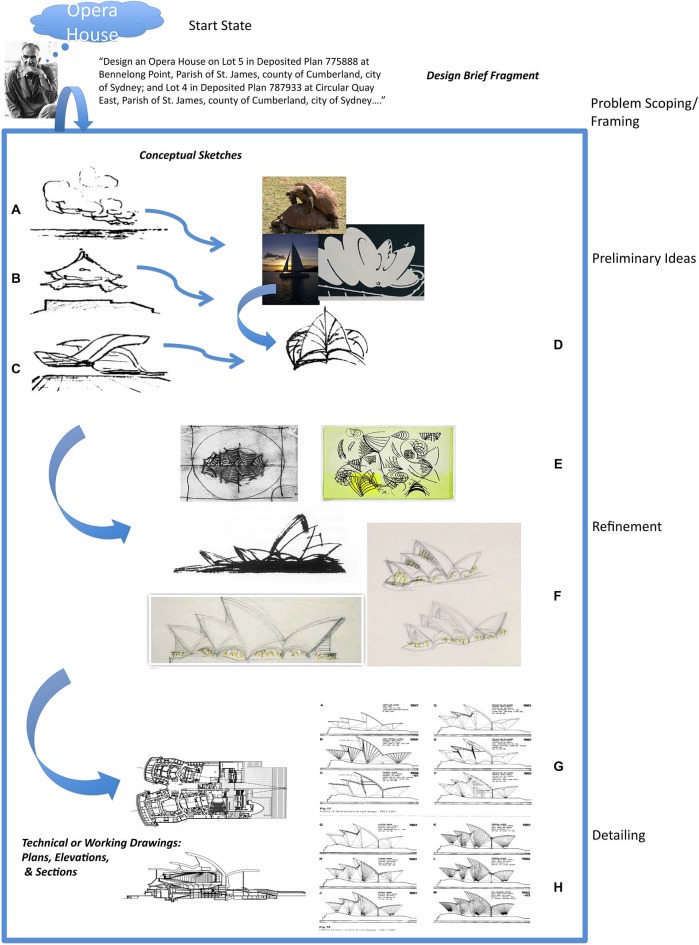Figure 1.
A highly incomplete and speculative reconstruction of Utzon’s problem space for designing the Sydney Opera House. Real world problem solving usually undergoes several distinct cognitive phases associated with different types of mental (and external) representations and transformations. In the case of architectural problem solving they can be broadly divided up into natural language, conceptual sketches, and contract documents. Their level of precision and ambiguity varies. Drawings (A–D) are examples of early conceptual sketches. There is often no fact of the matter as to what they represent. The “what is that” is often discovered and emerges after the drawing is made. Drawings (E) and (F) show the development of one of the ideas introduced in the conceptual sketches. The artifact is beginning to take a specific form and starting to be fleshed out. Drawings (G) and (H) are examples of technical drawings or blueprints that will form part of the contract documents. They specify the artifact in a very precise, complete, unambiguous and determinate manner. The differences between the conceptual sketches and working drawings (ostensibly both “pictorial”) are at least as great as the differences between the design brief and conceptual sketches. Reproduced with permission from Goel (2014).

